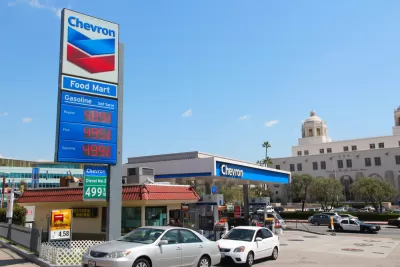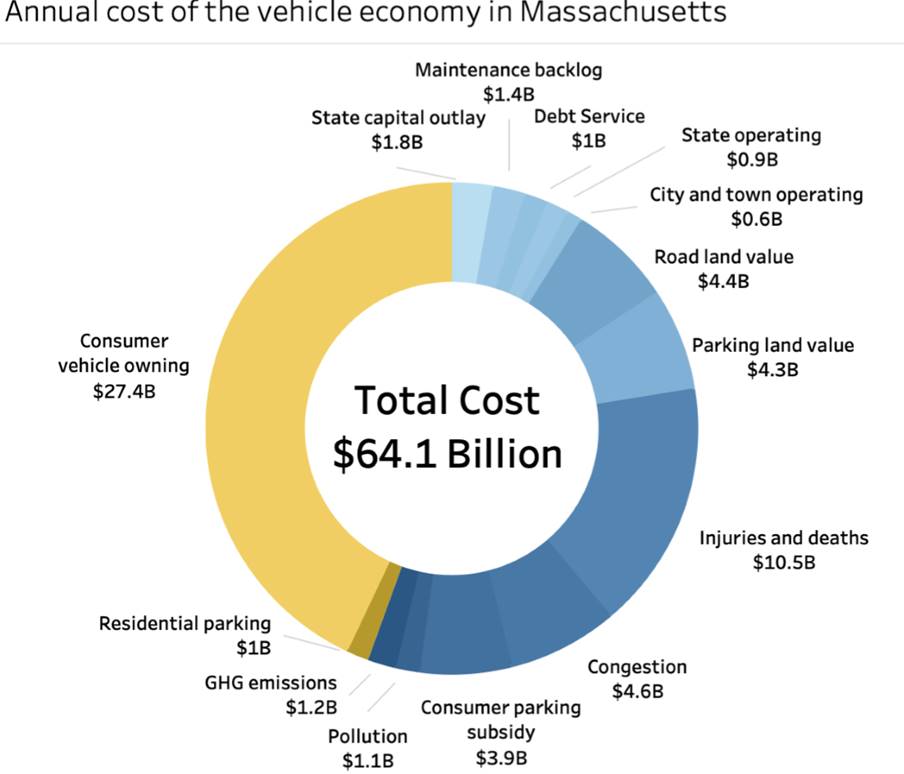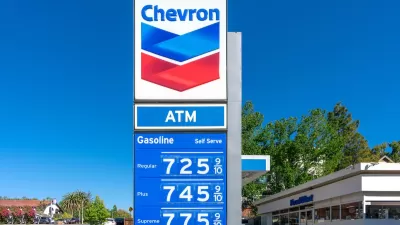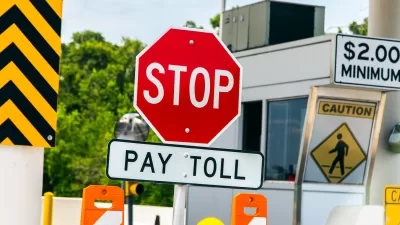Transportation planning decisions often involve trade-offs between various economic impacts, including direct user costs, and various external costs imposed on other people. All of these impacts should be considered in planning analysis.

A smart consumer wants comprehensive information on the full costs and benefits of their purchase decisions, including long-term and indirect impacts. For example, when purchasing a house you want to know, not only purchase price, but also its future maintenance, utility, and tax expenses, plus neighborhood health, safety, and economic conditions. A cheap house is not necessarily the most cost effective and optimal option when all these impacts are considered.
Similarly with transportation planning decisions. For example, expanding an urban highway to accommodate more commuters may seem cost effective and justified considering a narrow set of impacts, but expanding highways increases downstream congestion on surface streets, and each user needs a motor vehicle and a parking space at their destinations. Considering these costs, other solutions, such as improving public transit services, commute trip reduction programs, or more efficient road and parking pricing, may turn out to be more cost effective and beneficial overall.
I’ve devoted much of my professional career to evaluating these impacts, starting with my master’s thesis, "Transportation Cost and Benefit Analysis," a comprehensive framework for estimating the full costs of various travel modes, and therefore the potential savings and benefits that can result from mode shifts. I regularly update this report as new information becomes available. Although there are a few other transportation cost studies, most are one-time projects or focus on a particular mode or geographic area.
Researchers at Harvard University’s Kennedy School of Government recently used my cost analysis framework in the following study:
The $64 Billion Massachusetts Vehicle Economy
Abstract: Policymakers and budgetary analysts have long argued that roads are heavily subsidized. The diffusion of spending among federal, state, and local government entities, along with the complexity of indirect costs, make it difficult to understand the fully loaded cost of the vehicle economy. Individual families may track the personal costs of car ownership to their budgets, but they rarely consider the total cost of operating and maintaining the vehicle economy because the vast majority of roads and parking areas are provided free at the point of use. This study is intended to increase transparency regarding road-related spending and to provide a comprehensive estimate of the economic cost of Massachusetts’ vehicle economy.
Below is their summary graph, which shows the portion of their total estimated costs that are borne directly by users (yellow) and those that are external (blue).

These are very large numbers, beyond most people’s comprehension, so I generally recommend that such costs be reported per capita or per motor vehicle. Since Massachusetts has about seven million residents and five million motor vehicles, each billion dollars equals about $150 per capita or about $200 per vehicle. This indicates that automobile transportation imposes approximately $4,100 in user ("consumer") costs and $5,100 in external ("public") costs per capita, and about $5,700 in user costs and $7,100 in external costs per vehicle.
I suspect that this study significantly underestimates some costs. For example, it assumes that households only spend approximately $200 annually per vehicle on residential parking, including the costs of building and maintaining all private garages and driveways, a major study by Gabbe and Pierce finds that garage parking costs renter households is an average of $1,700 annually) indicate that such costs are much higher, and their study does not account for the external costs caused by vehicle fuel production and distribution, urban noise pollution, nor the public health costs resulting from sedentary living (or put differently, the health benefits from using more active modes). As a result, the study’s estimates should be considered lower-bound values; actual costs are probably much higher.
Despite its flaws, this study provides useful information and I hope stimulates discussion of the large costs of automobile transportation, and therefore the large potential savings and benefits that could result from a more diverse and efficient transport system. Below are some of this study’s key implications.
- Transportation costs are diverse, including costs to consumers (to own and operate vehicles, and provide residential parking), to businesses (to subsidize commercial parking), governments (to provide roadways and traffic services), other road users (congestion and accident risk), and residents (from tax and pollution costs).
- Theses costs are unfair. More than half of motor vehicle costs are external, imposed by motorists on other people. Every time somebody purchases a car they expect governments to build roads, businesses to subsidize their parking, and society to bear additional congestion, accident, and pollution costs. Since vehicle ownership increases with income, this is regressive, forcing lower-income people to bear costs imposed by more affluent motorists.
- Some costs that dominate transportation planning, such as road, congestion, and emission costs, although large in some locations are actually modest overall. Vehicle ownership, accidents, and parking are actually much larger total costs. As a result, a congestion or emission reduction strategy is probably not cost effective overall if it requires motorists to purchase new, more expensive vehicles, but provide far greater total benefits to society if they reduce vehicle ownership, parking or accident costs. For example, hybrid and electric vehicle subsidies provide much smaller benefits than public transit subsidies or Transportation Demand Management strategies that reduce total vehicle travel and therefore total vehicle costs.
Ideally, these costs should be estimated for various vehicle types (cars, electric cars, trucks, motorcycles, etc.), modes (walking, bicycling, ridesharing, public transit, etc.) and conditions (urban, suburban and rural, peak- and off-peak); this allows more specific costing and analysis of many types of policies and planning decisions. My report does this, but there are always new categories and perspectives to add.
This has important implications for many planning decisions that affect how and how much people travel. External costs are inherently inefficient and unfair. For example, when parking is efficiently priced, rather than funded indirectly, people tend to drive 15-30% less, indicating that 15-30% of traffic congestion, accidents, and pollution problems result from parking underpricing. It is also unfair, forcing households that own fewer than average vehicles to subsidize the road, parking, and fuel production costs of those who drive more than average.
Of course, motor vehicle travel provides large benefits, but there many examples of economically successful and very livable communities with much less automobile travel than what occurs in most North American cities; they achieve the benefits of efficient transportation with much lower costs by creating a diverse transport system which allows travelers to choose the most cost-effective mode for each trip. Comprehensive cost analysis provides important information for more efficient and equitable transport planning.
I hope the new Harvard University study stimulates a new cycle of quantitative research on transportation cost and benefit analysis.
For More Information
ATAP (2017), Australian Transport Assessment and Planning Guidelines, ATAP Steering Committee Secretariat, Australia Department of Infrastructure and Regional Development.
Udo J. Becker, Thilo Becker and Julia Gerlach (2012), The True Costs of Automobility: External Costs of Cars Overview on Existing Estimates in EU-27, TU Dresden (http://tu-dresden.de/en); at https://bit.ly/1Sfe4Dj.
CE, INFRAS, ISI (2011), External Costs of Transport in Europe – Update Study for 2008, Studie im Auftrag des Internationalen Eisenbahnverbandes (UIC), CE Delft (www.cedelft.eu), INFRAS AG, Zürich, Fraunhofer-ISI, Karlsruhe, External Transport Cost Study (http://ecocalc-test.ecotransit.org).
Mengying Cui and David Levinson (2018), Full Cost of Travel on the Twin Cities Road Network ($/veh-km), University of Sydney.
DfT (various years), Transport Analysis Guidance, Integrated Transport Economics and Appraisal, Department for Transport.
EU (2014), Guide to Cost-Benefit Analysis of Investment Projects: Economic Appraisal Tool for Cohesion Policy 2014-2020, European Commission (http://ec.europa.eu).
Matthew Holian and Ralph McLaughlin (2016), Benefit-Cost Analysis for Transportation Planning and Public Policy: Towards Multimodal Demand Modeling, Mineta Transportation Institute (http://transweb.sjsu.edu) for the California Department of Transportation.
Kara Kockelman, T. Donna Chen and Brice Nichols (2013), The Economics of Transportation Systems: A Reference for Practitioners, Center for Transportation Research (www.utexas.edu/research/ctr).
Todd Litman (2014), Economically Optimal Transport Prices and Markets: What Would Happen If Rational Policies Prevailed?, presented at the International Transportation Economic Development Conference, 9-11 April 2014, Dallas, Texas (https://tti.tamu.edu/conferences/ited2014).
Todd Litman (2017), Evaluating Active Transport Benefits and Costs: Guide to Valuing Walking and Cycling Improvements and Encouragement Programs, Victoria Transport Policy Institute (www.vtpi.org)
Todd Litman (2018), Transportation Cost and Benefit Analysis; Techniques, Estimates and Implications, Victoria Transport Policy Institute.
Todd Litman (2019), Evaluating Public Transit Benefits and Costs, Victoria Transport Policy Institute.
NZTA (2010), Economic Evaluation Manual, Volumes 1 and 2, New Zealand Transport Agency (www.nzta.govt.nz).
Ricardo-AEA (2014), Update of the Handbook on External Costs of Transport Final Report, European Commission (http://ec.europa.eu).
Akshaya Kumar Sen, Geetam Tiwari and Vrajaindra Upadhyay (2010), “Estimating Marginal External Costs of Transport in Delhi,” Transport Policy, Vol. 17, pp. 27–37.
Nariida C. Smith, Daniel W. Veryard and Russell P. Kilvington (2009), Relative Costs and Benefits of Modal Transport Solutions, Research Report 393, NZ Transport Agency (www.nzta.govt.nz).
Govinda R. Timilsina and Hari B. Dulal (2011), “Urban Road Transportation Externalities: Costs and Choice of Policy Instruments,” World Bank Research Observer, Vol. 26, No. 1, February, pp. 162-191.
Anming Zhang, Anthony E. Boardman, David Gillen and W.G. Waters II (2005), Towards Estimating the Social and Environmental Costs of Transportation in Canada, Centre for Transportation Studies, University of British Columbia (www.sauder.ubc.ca/cts), for Transport Canada.

Maui's Vacation Rental Debate Turns Ugly
Verbal attacks, misinformation campaigns and fistfights plague a high-stakes debate to convert thousands of vacation rentals into long-term housing.

Planetizen Federal Action Tracker
A weekly monitor of how Trump’s orders and actions are impacting planners and planning in America.

Chicago’s Ghost Rails
Just beneath the surface of the modern city lie the remnants of its expansive early 20th-century streetcar system.

Bend, Oregon Zoning Reforms Prioritize Small-Scale Housing
The city altered its zoning code to allow multi-family housing and eliminated parking mandates citywide.

Amtrak Cutting Jobs, Funding to High-Speed Rail
The agency plans to cut 10 percent of its workforce and has confirmed it will not fund new high-speed rail projects.

LA Denies Basic Services to Unhoused Residents
The city has repeatedly failed to respond to requests for trash pickup at encampment sites, and eliminated a program that provided mobile showers and toilets.
Urban Design for Planners 1: Software Tools
This six-course series explores essential urban design concepts using open source software and equips planners with the tools they need to participate fully in the urban design process.
Planning for Universal Design
Learn the tools for implementing Universal Design in planning regulations.
planning NEXT
Appalachian Highlands Housing Partners
Mpact (founded as Rail~Volution)
City of Camden Redevelopment Agency
City of Astoria
City of Portland
City of Laramie






























